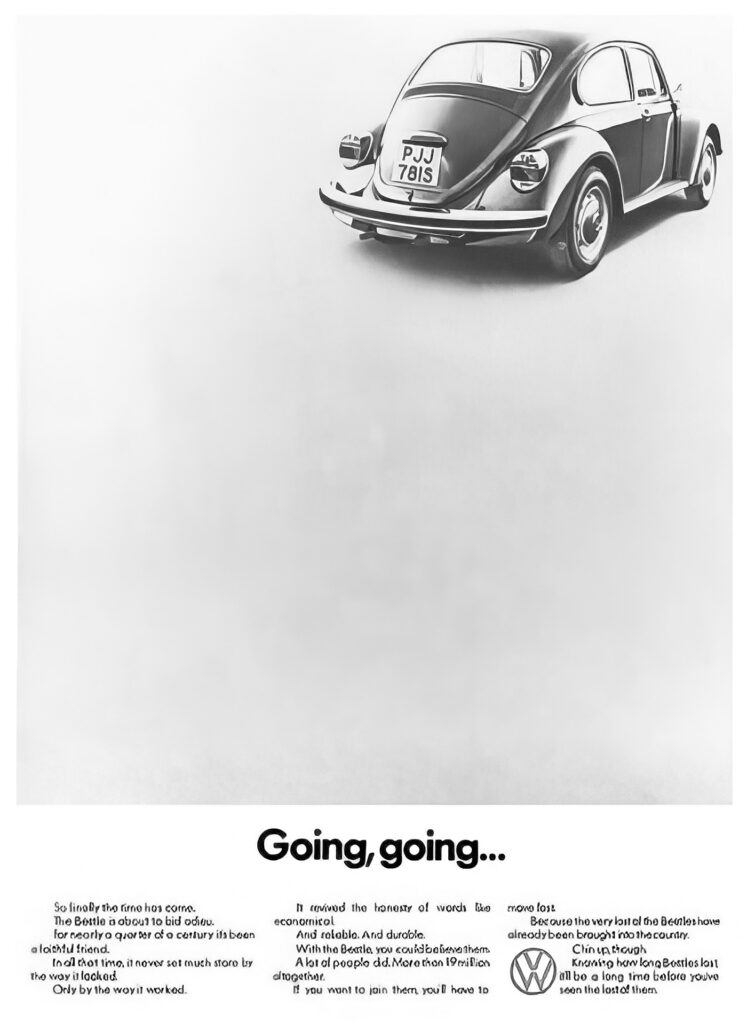DMOs: IT’S TIME TO THINK AUDIENCES, NOT TRAVELERS
Why you must invest in entertainment content right now.
AN ODYSSEY STUDIOS WHITE PAPER
Entertainment lives on forever.



In contrast, well-crafted entertainment-based content is evergreen, resonating with audiences long after it is seen and enjoyed. Such content, whether in the form of blog posts, videos, podcasts, or social media, can continues to engage viewers, listeners, and readers year after year after year.
By consistently creating and curating valuable, relevant, and engaging content, brands (and yes, that includes DMOs) can build lasting connections with their audiences that foster loyalty that extends beyond the lifespan of a single ad campaign.
In today‘s crowded and competitive digital landscape, this makes entertainment-based marketing the smarter investment than a costly one-hit wonder that earns a dramatic temporary bump in consumer attention that quickly fades.
In this white paper we will lay out the reasons why the ROI of the approaches that have worked in the past is evaporating and how those who transition to new ways of being invited into users lives will become the winners is this new game.
WHAT’S TRENDING
Earning Attention
Between the rise of ad blockers, the shift towards privacy-friendly, consent-based marketing, and the impending cookie-less future—advertisers are looking for alternative ways to target and track audiences without compromising personal information.
— Forbes
Brands are also leveraging the reach and expertise of influencers to create engaging, algorithm-friendly content.
Unlike traditional ads, well-crafted entertainment-based content like blog posts, videos, and podcasts provide intrinsic value, fostering lasting relationships with audiences. This shift towards evergreen content is expected to help marketers realize sustained engagement and brand advocacy.
— Backlinko
As consumers become more aware of privacy issues and the value of their personal data, brands that prioritize transparency, data protection, and user control are more likely to gain trust and loyalty. These shifts are expected to lead to a reallocation of marketing budgets towards privacy-friendly and consent-based strategies. Marketers are likely to increase investments in content marketing, influencer marketing, experiential marketing, and offline advertising channels as evidenced by with the growing popularity of ad-free streaming services. Today, more than 57% of viewers are willing to pay for an ad-free experience, even if it means higher costs akin to traditional cable bills.
The Experts Agree: It’s All About Branded Entertainment
— Marketing Dive
- Content WRX reports that 51% of marketers are reallocating budgets toward content marketing, indicating a significant industry-wide strategic pivot.
-
The Content Marketing Institute reveals that 63% of leading companies increased their content marketing budgets in 2022, underscoring the growing confidence in its long-term value.
-
PQ Media projects content marketing revenues to grow from $49.2 billion in 2021 to $76.9 billion by 2026, highlighting the anticipated economic impact.
-
75% of companies surveyed by the Content Marketing Institute cited improving brand awareness and lead generation as top motivations for increased content marketing investment.
-
Platforms like Instagram, YouTube, and TikTok have become critical for brand engagement, with 78% of users seeking “funny or entertaining content,” according to Epidemic Sound. And 40% of Gen Z-ers consult YouTube or TikTok or Instagram before Google.
-
With search giants like Google and Microsoft including AI summarizations in search results now, paired with rapidly shortening attention spans, it’s more important than ever to be in front of your audience in ways that entertain more than sell
Hacking the Algorithm, Not Targeting Ads
Algorithm-Optimized Content Creation:
-
Marketers are increasingly focused on creating content that is optimized for the algorithms of platforms like YouTube and TikTok.
-
This involves understanding the factors these algorithms use to promote and recommend content, such as watch time, engagement rates, and video quality.
-
By creating content that aligns with these algorithmic signals, marketers can organically increase their content’s visibility and reach without relying solely on paid promotion.
Influencer Marketing & Creator Collaborations:
-
Influencers and creators who have already established a strong following and mastered the art of algorithm-friendly content are becoming valuable partners for marketers. We’re already seeing shifts in trends, with brands seeking better influencer/product alignment, which in turn better aligns the downstream viewer with the brand.
-
Collaborating with influencers and leveraging their expertise in creating content that resonates with their audience can help marketers tap into engaged communities and benefit from the algorithm‘s promotion.
-
This approach often involves shifting marketing dollars away from traditional advertising channels and towards influencer partnerships and sponsored content.
Short-Form Video Content:
-
The algorithms on platforms like TikTok, Instagram Reels, and YouTube Shorts heavily favor short-form, engaging video content.
-
Marketers are dedicating resources to creating snackable, attention-grabbing videos that can capture viewers‘ interest and drive engagement.
- This shift towards short-form video content represents a movement of marketing dollars away from traditional long-form video ads and towards more agile, algorithm-friendly formats.
Data-Driven Content Optimization:
-
Services like YouTube and TikTok provide robust analytics tools that allow marketers to track the performance of their content and understand what resonates with their target audience.
-
By leveraging this data, marketers can continuously optimize their content strategy, adjusting factors like video length, hooks, and formats to align with the algorithms and improve engagement.
-
This data-driven approach often involves reallocating marketing budgets toward content creation and optimization rather than traditional media buying.
Community Building & Organic Growth:
-
The algorithms on these platforms prioritize content that fosters engagement and community building.
-
Marketers are investing in strategies that encourage user interactions, such as challenges, contests, and user-generated content campaigns.
-
This focus on organic growth and community building can shift marketing spend away from traditional advertising and towards more interactive and participatory initiatives.
CASE STUDIES
— Forbes
WeTransfer Strikes Gold with 2024 E-Zine Featuring Spike Jonze & Björk.
Red Bull has taken content marketing to the extreme, building an entire media empire around creating and distributing video content, live events, games, and more that align with their brand’s identity of pushing boundaries and extreme sports.
Mattel, a toy company, has been pivoting heavily towards entertainment to promote its brands and connect with modern audiences.
Adobe—inventor of Photoshop and many other digital design and production tools—partnered with Netflix to create a documentary series called “The Great Untold.” The series was designed to showcase what young, talented people can do with their tools if given the opportunity.
DMO CASE STUDIES
While there’s nothing new about TV shows heavily featuring locations — did anyone ever find out who shot JR? — the newest crop of TV and film to do so has catapulted previously obscure locations into the zeitgeist of modern Americans.
— University of Montana
The White Lotus, a fictitious luxury hotel, was actually shot at the Four Seasons for both season 1 and season 2 of the HBO show.
— Marc Speichert, EVP, Four Seasons
And who could forget the famed RV in the desert?
— Richard Berry, Albuquerque Mayor
Looking closer to home, Odyssey Studios produced a scripted show set in St. Pete/Clearwater, Florida, called Life’s Rewards.
— Ryan Thompson SVP, Miles Partnership
SHAPING CULTURE
— Forbes
It’s not just entertainment
Engaging on a Deeper Level:
-
A staggering 66% of consumers believe it‘s important for brands to take public stands on social and political issues, according to Sprout Social. This statistic underscores a significant shift in consumer behavior and expectation: audiences are increasingly aligning their purchasing decisions with their values, choosing to support brands that not only talk the talk but also walk the walk.
Communicate Shared Values:
-
It enhances brand loyalty: by aligning with their audience‘s values and taking stands on issues that matter to them, DMOs can foster a sense of loyalty and trust. This goes beyond transactional relationships, building a community of advocates and supporters.
-
It differentiates the brand: in a crowded market, taking a stand on significant issues can help a brand stand out. Branded content that communicates a commitment to certain values or causes can differentiate a DMO from its competitors, making it more memorable and favored by travelers.
-
It facilitates engagement: content that resonates with an audience‘s values or addresses social and political issues encourages engagement through comments, shares, and discussions. This not only amplifies the content‘s reach but also strengthens the relationship between the brand and its audience.
What’s Next?
-
Start with strategy. it’s easy to see all the buzz over things like Yellowstone and Barbie and just to jump in or, if you’re already doing work in this space, go all in. However, it’s key to look at branded entertainment like any other business shift. Define what success looks like, and create a roadmap with measurements along the way.
-
Remember that authenticity is key: any effort to communicate values or take stands on issues must be rooted in authenticity. Consumers are adept at detecting when a brand‘s stance is superficial versus when it‘s genuinely committed to a cause.
-
Create consistency across platforms: the brand‘s values and positions should be consistently communicated across all content platforms, from social media to blogs to video content. This consistency reinforces the brand‘s commitment and helps build a cohesive narrative.
-
Engage in storytelling: leveraging storytelling to share the brand‘s values, the reasoning behind its positions, and how it‘s taking action can be incredibly powerful. Stories resonate more deeply than facts or statements alone, creating an emotional connection with the audience.
CONCLUSIONS
Just Make Great Content
— New York Times
The migration towards branded content and entertainment represents a seismic shift in marketing strategy. One driven by rapidly changing consumer preferences. DMOs can no longer afford to view travelers as customers. Instead, they need to be understood as audiences seeking brands that affirm their values. That means adapting to this shift in consumer buying mindset is not optional. It’s essential to stay competitive.
As DMOs begin embracing the idea of themselves as publishers of entertainment, not just as marketing organizations, they can navigate the transition to content-driven marketing and ensure that their messages resonate effectively and enduringly with the target audiences they wish to attract.
Top Four Questions We’re Asked: FAQs
Go for broke or try a pilot project?
Start with small, focused pilot projects that allow testing your branded content’s effectiveness in a controlled environment. Define KPIs at the outset. This approach minimizes risk and provides tangible data to support further investment. Then you can continue to incrementally shift dollars based on success, allowing for a gradual transition that doesn‘t abruptly cut off current successful channels. We recommend moving traditionally spent media dollars to content production and distribution. Over time, a smart balance can be achieved, and new net dollars can be allocated appropriately.
How do we measure effectiveness.
The effectiveness of branded content can be harder to measure. Shift focus to relevant engagement metrics such as watch time, social shares, and comments, which are more indicative of the success of branded entertainment.Leverage analytics tools designed for content marketing to track these metrics effectively. Then, utilize A/B testing to refine content strategies based on what resonates most with your audience.
How can we keep content fresh and relevant?
Maintaining a steady stream of fresh, relevant content can be a significant challenge. That’s especially true for DMOs that may not have deeper pockets or a steady stream of new, exciting information to share regularly.
How do we create content that is both relevant and engaging?
Nimble DMOs can find different ways consistently produce high-quality content. Entertainment-based content captivates their audience and stands out in the crowded online landscape. Many clients already have a dedicated content team within their organization that understands the brand‘s voice and audience. Such internal content pros can effectively coordinate with outside professionals or partner with influencers and content creators who already have a following within your target market. These partnerships can bring fresh perspectives to your content and extend its reach.
About the Author
When not burying himself in research papers like this one, you’ll find him swinging a camera, writing or directing.